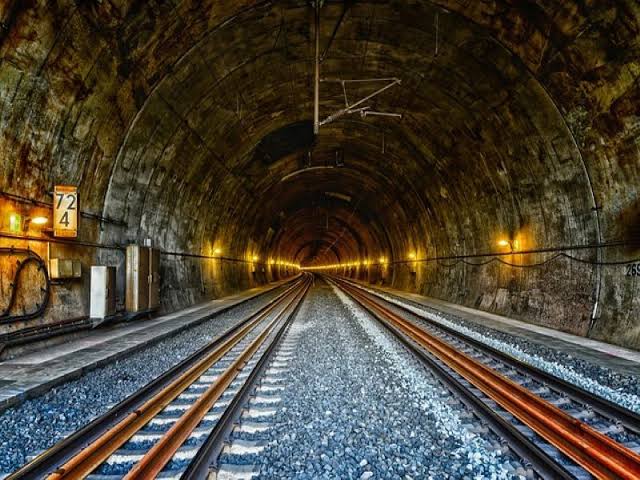Kashmir Rail Link project to be completed soon using new tunnelling methods

The 111-km-long Katra-Banihal section of the Kashmir Rail Link involves major tunnelling. There are 27 main tunnels totalling a length of 97 km and eight escape tunnels totalling 67 km. This section alone has 26 major bridges and 11 minor ones ie a total of 37 bridges.
Tunnelling in the Himalayan terrain is a very tricky and dangerous affair. Therefore the Indian Railways engineers developed a new tunnelling method to complete the construction of Tunnel-1 on the 111-km-long Katra-Banihal section of the Kashmir rail link project.
The 3.2-km-long single tube tunnel forms the first part at the foot of the Trikuta Hills in the Katra-Reasi section of the Udhampur-Srinagar-Baramulla Rail Link Project. This was the most difficult section of the project.
A senior railway engineer said it involved providing pre-excavation support measures to tackle the flowing conditions of the earth encountered while excavating the tunnel.
The railways also changed the alignment of the rail line to ensure that only a small portion passes through the tricky terrain, which the engineers had described as the worst conditions ever encountered in building tunnels anywhere in the country. in the New Austrian Tunnelling Method.
“We inserted nine-metre pipes in the mountains. It is called pipe roofing. We made an umbrella using these perforated poles and filled them with PU grout. It is a chemical that mixes with the soil and increases its volume three times over and solidifies the soil like a rock.
This structure is tested for stability and then we proceed with the excavation bit by bit,” the engineer said. He said the engineers also designed stress release holes and wing drainage holes to allow the strata to relax and lose water. The difficult terrain has led to slowing down of the work.
“Had these conditions been encountered in any other country, they would have abandoned the site. But we decided to go ahead and employed a new tunnelling method,” he said.
Work was held up on this crucial tunnel for over three years since 2017 and engineers now plan to complete it by early next year.



